 W
WJoseph Bannister was an English pirate who operated in the Caribbean during the Golden Age of Piracy. He is best known for defeating two Royal Navy warships in battle.
 W
WJoseph Bradish (1672–1700) was a pirate best known for a single incident involving a mutiny.
 W
WAlexandre Bras-de-Fer was a flibustier in the latter half of the mid-17th century. He is best known for capturing a Spanish ship after being shipwrecked, though his story is possibly apocryphal.
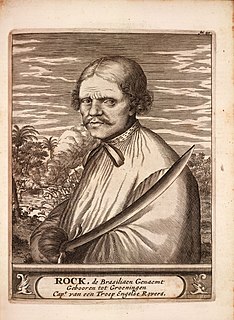 W
WRoche Braziliano was a Dutch pirate born in the town of Groningen. His pirate career lasted from 1654 until his disappearance around 1671. He was first made famous in Alexandre Exquemelin's 1678 book The Buccaneers of America; Exquemelin did not know Braziliano's real name, but historians have found he was probably born as Gerrit Gerritszoon and that he and his parents moved to Dutch-controlled Brazil. He is known as "Roche Braziliano", which in English translates to "Rock the Brazilian", due to his long exile in Brazil.
 W
WChristina Anna Skytte was a Swedish baroness and pirate.
 W
WEdmund Cooke was a merchant captain, buccaneer, and pirate. He is best known for sailing against the Spanish alongside Bartholomew Sharp, John Coxon, Basil Ringrose, Lionel Wafer, and other famous buccaneers. Cooke's flag was red-and-yellow striped and featured a hand holding a sword.
 W
WJuan Corso was a Corsican pirate and guarda costa privateer who sailed in Spanish service, operating out of Cuba.
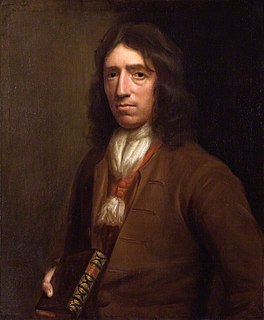 W
WWilliam Dampier was an English explorer, pirate, and navigator who became the first Englishman to explore parts of what is today Australia, and the first person to circumnavigate the world three times. He has also been described as Australia's first natural historian, as well as one of the most important British explorers of the period between Sir Walter Raleigh and James Cook.
 W
WJacquotte Delahaye, was a fictional pirate character in the Caribbean sea. She was depicted as operating alongside Anne Dieu-le-Veut, was one of very few 17th-century female pirates. There is no evidence from period sources that Delahaye was a real person. Stories of her exploits are attributed to Leon Treich, a French fiction writer of the 1940s.
 W
WJoost van Dyk was a Dutch privateer who was one of the earliest European settlers in the British Virgin Islands in the seventeenth century, and established the first permanent settlements within the Territory. The islands of Jost Van Dyke and its smaller neighbor Little Jost Van Dyke, as well as Little Dix Bay on Virgin Gorda island, are named after him.
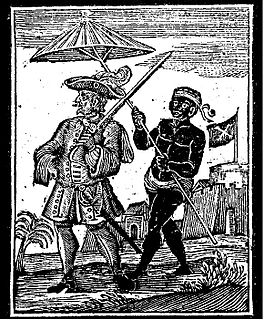 W
WHenry Every, also known as Henry Avery, sometimes erroneously given as Jack Avery or John Avery, was an English pirate who operated in the Atlantic and Indian oceans in the mid-1690s. He probably used several aliases throughout his career, including Benjamin Bridgeman, and was known as Long Ben to his crewmen and associates.
 W
WAlexandre Olivier Exquemelin was a French, Dutch or Flemish writer best known as the author of one of the most important sourcebooks of 17th-century piracy, first published in Dutch as De Americaensche Zee-Roovers, in Amsterdam, by Jan ten Hoorn, in 1678.
 W
WPierre Francois was a mid-17th-century flibustier, or French buccaneer, active in the Caribbean. He is best known for a single attack on a Spanish pearl-diving fleet. His story appears only in Alexandre Exquemelin's History of the Buccaneers and the truth of his account is uncertain.
 W
WThe Golden Age of Piracy is a common designation for the period between the 1650s and the 1730s, when maritime piracy was a significant factor in the histories of the Caribbean, the United Kingdom, Indian Ocean states, North America, and West Africa.
 W
WLaurens Cornelis Boudewijn de Graaf was a Dutch pirate, mercenary, and naval officer in the service of the French colony of Saint-Domingue during the late 17th and early 18th century.
 W
WPierre Le Grand was a French buccaneer of the 17th century. He is known to history only from one source, Alexandre Exquemelin's Buccaneers of America, and may be imaginary.
 W
WNicholas van Hoorn was a merchant sailor, privateer and pirate. He was born in the Netherlands and died near Veracruz after being wounded on the Isla de Sacrificios. Nikolaas or Klaas was engaged in the Dutch merchant service from about 1655 until 1659, and then bought a vessel with his savings. With a band of reckless men whom he had enlisted, he became a terror to the commerce of the Dutch Republic and the Spanish Empire. Later he had several ships in his employment and obtained such notoriety that some governments were willing to employ him against their enemies.
 W
WThomas Howard was a pirate primarily active in the Indian Ocean and the Red Sea during the Golden Age of Piracy. He served under other pirates of the time, including George Booth and John Bowen. He also commanded the 36-gun Prosperous. He later retired to Rajapur, in India, where he married a local woman. He was later murdered by her relatives.
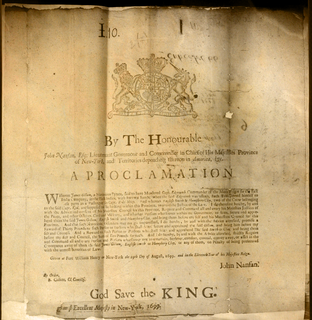 W
WJames Gilliam, or James Kelly was an English pirate and buccaneer active off the coasts of Spanish South and Central America and later in the Indian Ocean. He sailed under several different pirate Captains but is best remembered for his brief association with William Kidd.
 W
WWilliam Kidd, also known as Captain William Kidd or simply Captain Kidd, was a Scottish sailor who was tried and executed for piracy after returning from a voyage to the Indian Ocean. Some modern historians, for example Sir Cornelius Neale Dalton, deem his piratical reputation unjust.
 W
WMichel le Basque was a pirate and flibustier from the Kingdom of Navarre in the southwest of France. He is best known as a companion of François L'Olonnais, with whom he sacked Maracaibo and Gibraltar.
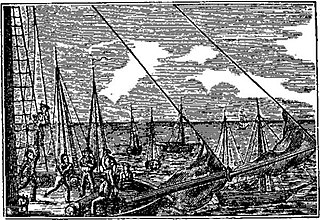 W
WWilliam Lewis was a pirate supposedly active in the Caribbean, off the American east coast, and the west coast of Africa. He was known for sparing his victims, and for being killed after announcing he had made a pact with the Devil. He is likely the fictional creation of Captain Charles Johnson, who presented his story among those of real historical pirates.
 W
WEtienne de Montauban was a French flibustier (buccaneer), privateer, and pirate active in the Caribbean and off the west African coast. Frequently referred to as Sieur de Montauban, he wrote an account of his later voyages including surviving a shipwreck.
 W
WDaniel Montbars (1645–1707?), better known as Montbars the Exterminator, was a 17th-century French buccaneer. For several years, he was known as one of the most violent buccaneers active against the Spanish during the mid-17th century. His reputation as a fierce enemy of the Spanish Empire was matched only by l'Ollonais and Roche Braziliano.
 W
WSir Henry Morgan was a Welsh privateer, plantation owner, and, later, Lieutenant Governor of Jamaica. From his base in Port Royal, Jamaica, he raided settlements and shipping on the Spanish Main, becoming wealthy as he did so. With the prize money from the raids he purchased three large sugar plantations on the island.
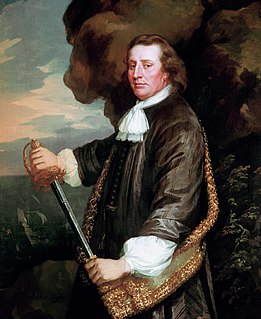 W
WVice Admiral Sir Christopher Myngs was an English naval officer and privateer. He came of a Norfolk family and was a relative of Admiral Sir Cloudesley Shovell. Samuel Pepys' story of Myngs' humble birth, in explanation of his popularity, is likely to be erroneous.
 W
WNathaniel North was a Bermuda-born pirate during the Golden Age of Piracy, operating in the Indian Ocean under John Bowen and then as captain of the Defiant following Bowen's retirement in 1704. After losing the Defiant he ruled a pirate colony at Ambonaivo made up of his former crew before returning to sea. Retiring with great wealth in 1709, North settled in Madagascar and married a local woman, but was murdered by her family.
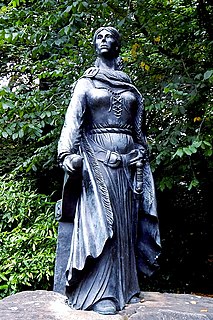 W
WGrace O'Malley - in her native Irish language Gráinne Ní Mháille, also known as Gráinne O'Malley, was the head of the Ó Máille dynasty in the west of Ireland, and the daughter of Eoghan Dubhdara Ó Máille.
 W
WJean-David Nau, better known as François l'Olonnais, was a French pirate active in the Caribbean during the 1660s.
 W
WThomas Pound was an English Royal Navy officer who turned pirate and was briefly active in the coastal waters of New England during 1689. Caught and convicted of piracy, his crimes were forgiven and he later rejoined the Royal Navy.
 W
WAmaro Rodríguez-Felipe y Tejera Machado, better known as Amaro Pargo, was a famous Spanish corsair. He was one of the most renowned corsairs of the Golden Age of Piracy and one of the most prominent personalities of 18th-century Spain.
 W
WThe Republic of Salé was a short-lived city state at Salé, during the 17th century. Located at the mouth of the Bou Regreg river, it was founded by Moriscos from the town of Hornachos, in Western Spain. Moriscos were the descendants of Muslims who were nominally converted to Christianity, and were subject to mass deportation during the Spanish Inquisition. The Republic's main commercial activities were the Barbary slave trade and piracy during its brief existence in the 17th century. The city is now part of the Kingdom of Morocco.
 W
WRobert Searle was one of the earliest and most active of the English buccaneers on Jamaica.
 W
WGiles Shelley was a pirate trader active between New York and Madagascar.
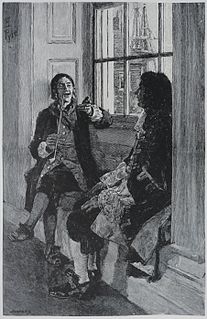 W
WThomas Tew, also known as the Rhode Island Pirate, was a 17th-century English privateer-turned pirate. He embarked on two major pirate voyages and met a bloody death on the second, and he pioneered the route which became known as the Pirate Round. Many other infamous pirates followed in his path, including Henry Every and William Kidd.
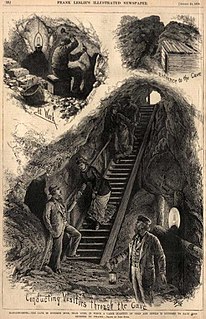 W
W“Captain Veale” was the name shared by two unrelated Massachusetts pirates active in the 17th century. The first, Thomas Veale, was known for legends of his buried treasure. The second Veale attacked ships along New England from Virginia to Boston with pirate John Graham.
 W
WEmanuel Wynn was a French pirate of the 17th century, and is often considered the first pirate to fly the Jolly Roger.